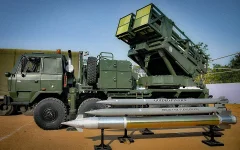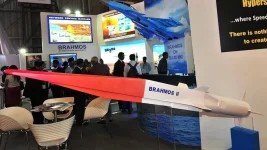- Views: 4K
- Replies: 18
India's Defence Research and Development Organisation (DRDO) has successfully developed the nation's first Photonic Radar, a groundbreaking technology that uses light to detect and track targets with exceptional precision.
This major advancement promises to significantly enhance India's air defence capabilities, offering the potential to identify even the most advanced stealth aircraft and drones that are designed to be invisible to conventional systems.
The new system, developed as part of the Aatmanirbhar Bharat (Self-reliant India) initiative, is now set to undergo a series of rigorous trials to validate its performance in real-world operational scenarios.
A New Era in Radar Technology
Unlike traditional radars that transmit radio frequency (RF) waves, a photonic radar operates by using light particles, or photons, for signal processing. This fundamental difference allows the system to overcome many limitations of conventional radar.By employing light waves, which have a much shorter wavelength than radio waves, the photonic radar can achieve ultra-high resolution, enabling it to create clearer and more detailed images of targets.
This innovative approach, developed at DRDO's Electronics and Radar Development Establishment (LRDE) in Bengaluru, provides a decisive advantage in modern warfare.
"This is like upgrading from a blurry camera to a 4K lens," noted aerospace analyst Dr. Rhea Malhotra. "It’s a force multiplier for India’s integrated air defence network."
Unmatched Advantages for National Defence
The primary strengths of the photonic radar lie in its superior resolution and its formidable resistance to electronic jamming.Modern stealth aircraft are coated with materials that absorb or deflect radio waves, making them difficult for standard radars to detect. However, the light-based signals of the photonic radar are significantly harder to evade.
Key advantages of this technology include:
- Stealth Detection: Its high sensitivity and signal clarity, achieved through Photonic Integrated Circuits (PICs), allow it to detect low-observable targets such as stealth fighters, drones, and even hypersonic missiles.
- Immunity to Jamming: The use of optical frequencies makes the system inherently resistant to electronic countermeasures that are commonly used to disrupt RF-based radar systems.
- Higher Precision: The technology provides a much higher signal-to-noise ratio, resulting in more accurate tracking and identification of multiple targets simultaneously across a broad spectrum.
Upcoming Trials and Integration
DRDO is preparing for extensive trials scheduled to begin in late 2025. These tests will assess the radar's effectiveness in diverse and challenging conditions, including high-altitude terrains, coastal surveillance, and intense electronic warfare environments.A crucial goal of the trials is to ensure seamless integration with India's existing air defence infrastructure, such as the indigenous Akashteer command and control system.
The compact and lightweight design of the photonic radar also makes it suitable for deployment on various platforms, including fighter jets like the Su-30 MKI, Rafale, and the indigenous Tejas, as well as mobile ground units for the Indian Army along the Line of Actual Control (LAC) and Line of Control (LoC).
A Symbol of Self-Reliance and Global Leadership
The development of the photonic radar places India in an elite group of nations, including the United States, China, and Israel, that are actively pursuing this next-generation technology.The project was executed with contributions from private industry partners through the Technology Development Fund (TDF), highlighting India's growing synergy between government research and private-sector innovation.
This achievement not only reduces reliance on foreign military technology but also builds on DRDO's legacy of success with systems like the Uttam AESA radar, reinforcing India's position as a leader in advanced defence technology.



